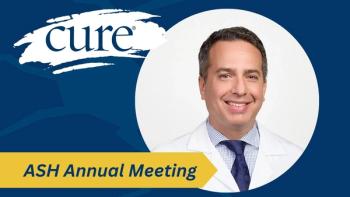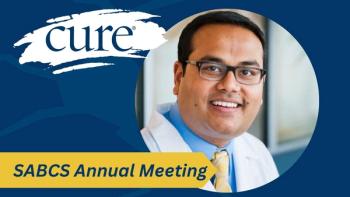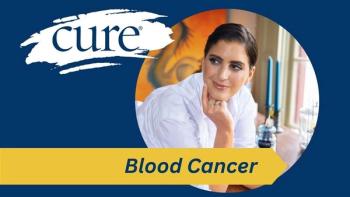
New Drug May Mitigate Incidence, Severity of Chemotherapy-Related Oral Mucositis in Patients With Head and Neck Cancer
Avasopasem manganese is the first drug that has been shown to reduce the incidence and severity of chemotherapy-related oral mucositis in patients with head and neck cancer, research showed.
Avasopasem manganese (GC4419) reduced the incidence and severity of chemotherapy-related oral mucositis in patients with locally advanced, nonmetastatic head and neck cancer, in a phase 3 trial, making this the first drug to show significant progress in decreasing the painful mouth condition.
The drug was also well-tolerated, with a comparable side effect profile to placebo.
Findings from the phase 3 ROMAN trial which were presented during the
Additionally, treatment with avasopasem prior to IMRT resulted in a 56% reduction in median days of severe oral mucositis (18 vs 8 days, respectively), a 27% reduction in grade 4 incidence (33% vs 24%, respectively), and a 24% reduction in the mean number of days of grade 4 incidence (7.2 vs 5.5 days, respectively).
“IMRT and cisplatin (are) concurrently the standards of care for locally advanced head and neck cancer,” Dr. Carryn M. Anderson, clinical associate professor of radiation oncology, and Residency Program Director in the Department of Radiation Oncology at The University of Iowa Hospitals and Clinics, said in a presentation of the data.
“(However,) the majority of these patients are going to experience severe oral mucositis during their treatment course (with these treatments). We all struggle to treat this side effect for our patients. (Our patients) struggle with a lot of pain, they are often on narcotics, (and) sometimes they end up needing a feeding tube.”
Approximately 70% of oral mucositis incidences will be severe (grade 3 or 4) and the typical onset is in conjunction with radiation dose of 40 Gy. Unfortunately, there are no Food and Drug Administration-approved agents to mitigate severe oral mucositis for patients with head and neck cancer, Anderson noted. However, findings with avasopasem may hold the potential to change the treatment landscape.
Avasopasem protects normal cells, but not cancer cells from radiation by converting radiation therapy induced superoxide to hydrogen peroxide. This is crucial because superoxide is what initiates the tissue damage and inflammatory cascade that ultimately leads to oral mucositis, Anderson explained.
Data from a phase 2b trial showed that 90 mg of avasopasem led to clinically meaningful reductions in duration and incidence of severe oral mucositis with a comparable side effect profile to placebo. Of note, tumor outcomes were maintained at one- and two- year follow-up, in both the experimental and control groups.
ROMAN sought to confirm those findings. This randomized, multicenter, phase 3, clinical trial treated 407 patients with locally advanced, nonmetastatic head and neck cancer from 69 different sites across the United States and Canada.
Eligible participants needed to be 18 years of older, have a diagnosis of squamous cell carcinoma of the head and neck, and have a plan to receive IMRT as single daily fractions of 2.0 to 2.2 Gy with a cumulative radiation dose of 60 to 72 Gy plus standard cisplatin therapy. In addition, eligible participants must have an ECOG performance status of 2 or higher (indicating that their disease and/or treatment was impacting their ability to carry out daily tasks), adequate hematologic, renal and liver function, negative serum pregnancy test and use of effective contraception.
Exclusion for enrollment included tumor of the lips, larynx, hypopharynx, nasopharynx, sinuses, or salivary glands, metastatic disease, Prior radiotherapy to the region of the study cancer or adjacent anatomical, prior induction therapy, concurrent participant in another investigational clinical study or any other concurrent approved or investigational anticancer agent.
Furthermore, patients who could not eat soft foods at baseline, were pregnant or breastfeeding, had another malignant tumor within the past five years, had oral mucositis or another infections disease at baseline or had known allergies or intolerance to cisplatin were not able to participate.
Patients were randomly assigned to receive either 90-mg avasopasem (241 patients) or placebo (166 patients) via a 60-minute infusion, Monday to Friday, prior to undergoing radiation. Preventative avasopasem or placebo concluded within less than 60 minutes of radiotherapy initiation.
This treatment cycle lasted for seven weeks. Stratification factors included surgery status (pre vs post operation) and cisplatin schedules (once every three weeks vs weekly). The trial’s main goal was the cumulative incidence of severe oral mucositis from the first IMRT fraction until the end of the study treatment periods. On average, this time was estimated to be approximately seven weeks.
Key secondary end points included the duration of severe oral mucositis (total number of days), as well as the incidence and total number of days that grade 4 severe oral mucositis endured. Safety and tolerability, as well as tumor outcomes at one to two years of follow-up, represented additional end points. Tumor follow-up is still in progress.
The investigative and control groups were well-balanced with most patients having oropharyngeal histology (80% and 85%, respectively), HPV-positive status (80% and 81%), and were receiving definitive treatment (81% and 81%).
Treatment with avasopasem demonstrated improvements across key parameters including all IMRT landmarks: at 30 Gy, the incidence among the experimental and placebo group was 9% vs 16% , respectively (RR, 0.86; P = .030); at 40 Gy, the incidence was 17% v 32% (RR, 0.5; P = .001); at 50 Gy, the incidence was 28% vs 45% (RR, 0.6; P < .001); at 60 Gy, the incidence was 42% vs 58% (RR, 0.7; P = .002), and post IMRT, the incidence was 58% vs 71%, (RR, 0.82; P = .012).
Anderson noted that those who received full courses of avasopasem (25 or more infusions) had better incidence reduction with only 51% of patients developing severe oral mucositis.
Across all grades, the most frequent side effects were lymphopenia (lack of white blood cells called lymphocytes), followed by all-grade nausea, fatigue, oropharyngeal pain and constipation, and grade 3 or greater leukopenia, neutropenia, dysphagia and oropharyngeal pain. Notably, higher rates of side effects were reported among patients receiving placebo than those receiving avasopasem.
“In conclusion, (avasopasem) at 90 milligrams is the first drug to show a statistically significant and clinically meaningful reduction and severe oral mucositis incidence and duration,” Anderson said. “There (were) also meaningful improvements in severity and delay in onset of severe oral mucositis, (and) the safety profile (was) compared comparable to placebo.”
“The results we present today are consistent with our published phase 2 results,” Anderson concluded, noting that the supporting company plans to move forward with an FDA submission.
For more news on cancer updates, research and education, don’t forget to





